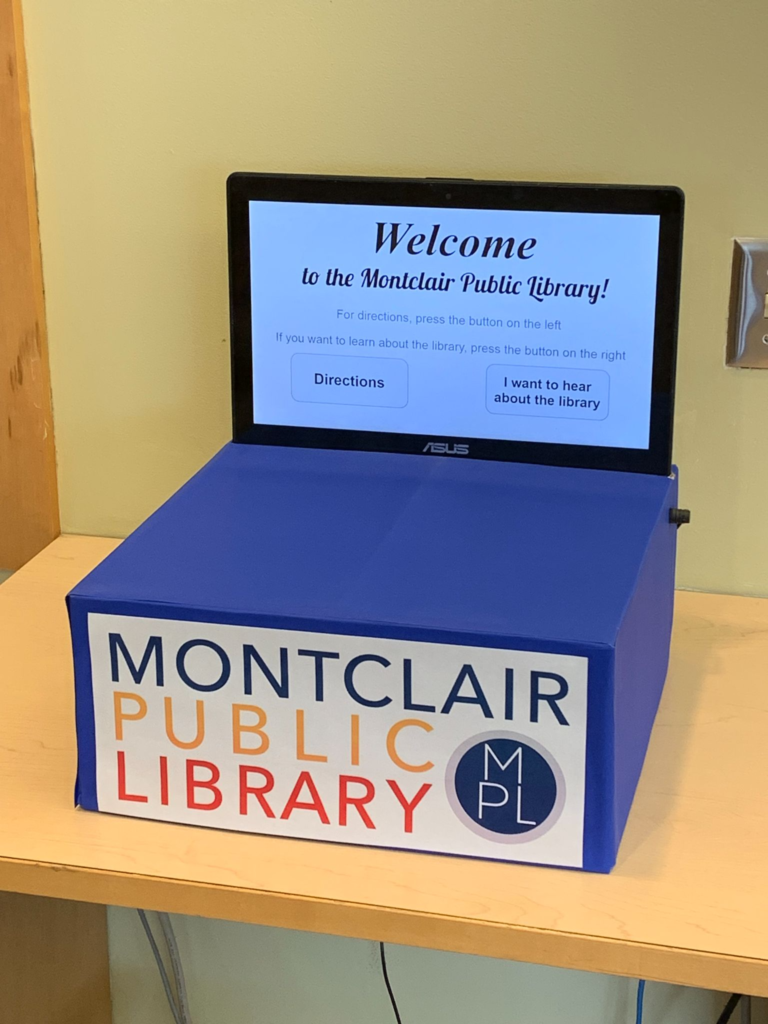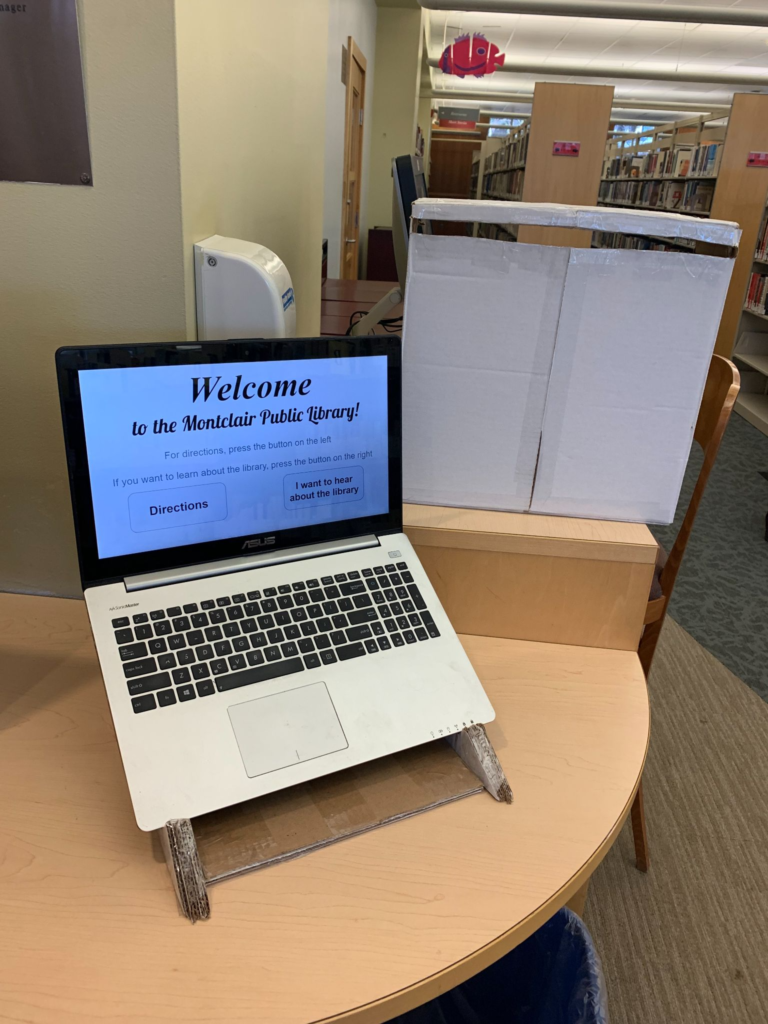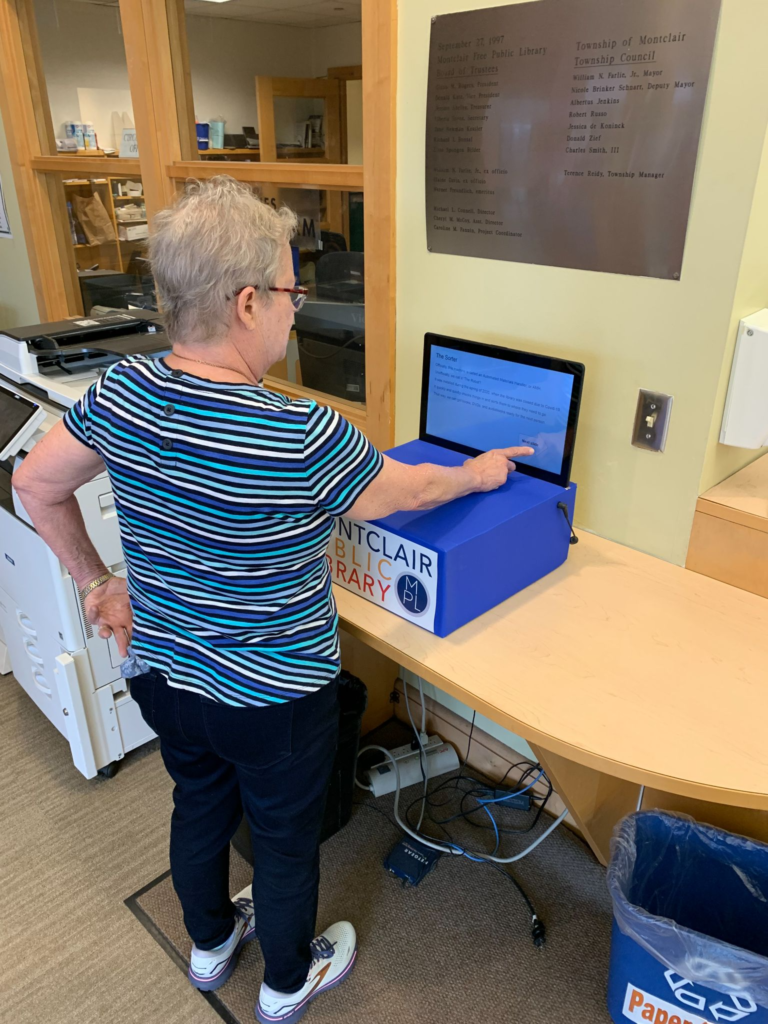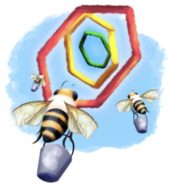Blue Box Model: Low-Cost & Eye Catching Storytelling Box
Can you create a storytelling box for $15, assuming you already have a laptop? Absolutely! For a model, consider what library staff made in Montclair, New Jersey.

At left is the prototype. The blue is eye-catching and the box feels almost like a stage for the screen. We were drawn in, and found ourselves asking, “What can you do here?” In other words, the object itself was a hook for our attention.
Inside is a repurposed laptop with touchscreen capabilities. Buttons on the screen allow patrons to explore branching stories (e.g., choose-your-own-adventure), or to select their interests. The physical structure is mostly cardboard with about $15 worth of wallpaper, and signage printed in the library. (Hurrah for cardboard prototyping!) The narrative is controlled with ordinary Google Slides using a little fancy hot-linking. The whole thing is positioned next to the front desk at the branch library.
If you take the cover off, the inside looks like this:

To hold the laptop in place, a cardboard stand was created by gluing several layers of cardboard together. The cover box has a slot for the laptop screen to fit through along with a hole on the side to allow for the laptop power cable to reach in.
For scale, here is the box in use:

To see it in action, check out this video:
The use of cardboard for rapid prototype is invaluable for public installations; it doesn’t require huge amounts of time, effort, or budget to build something real that can be tested with patrons. Play/user testing as early as possible is the best way to ensure you have time to either make a more robust version for heavy use, or to dive deeper into interactive content creation and storytelling — including with buttons, or game design systems like Scratch.
We find this version provocative for its simplicity, both in terms of software and physical construction.
